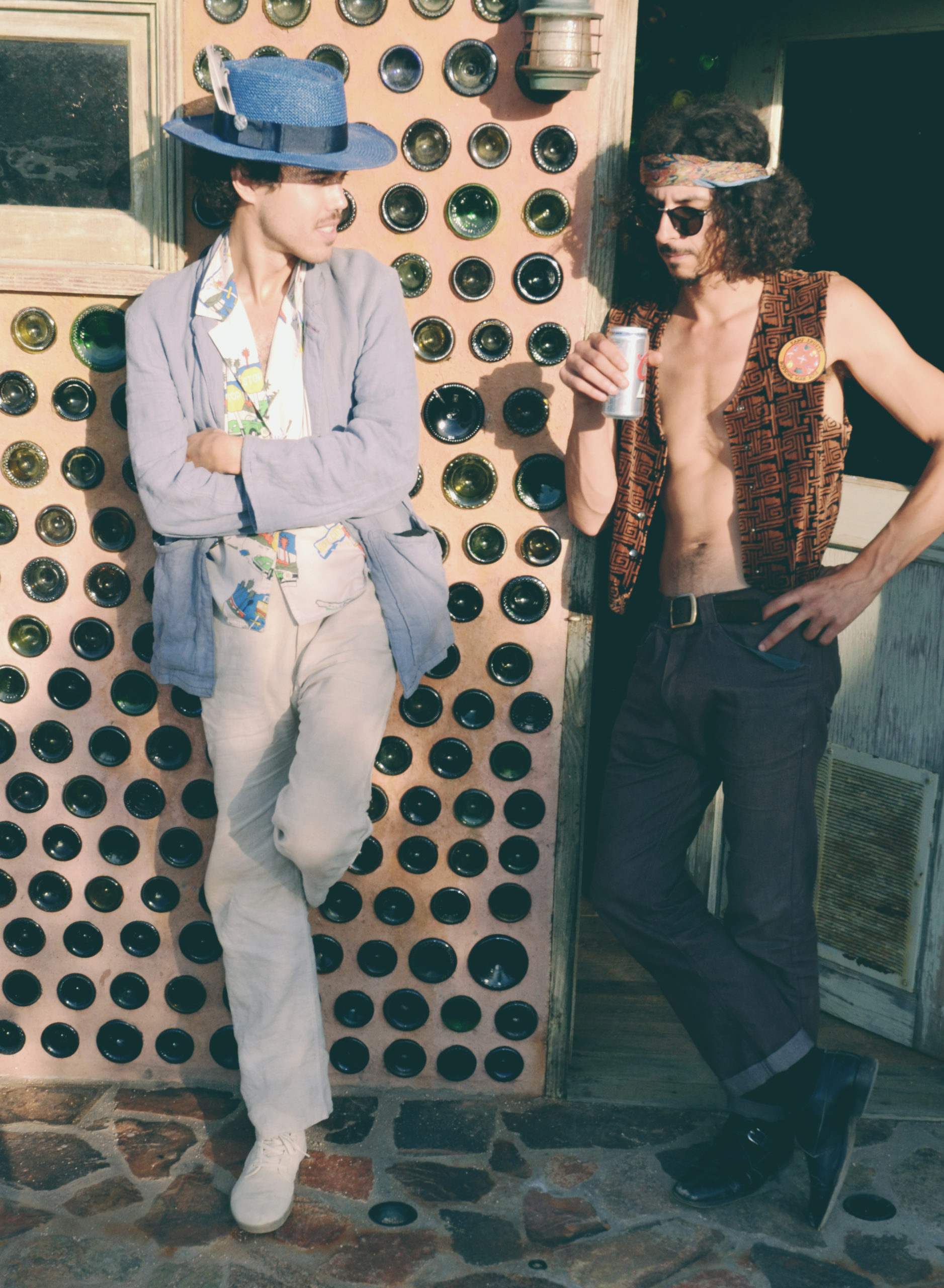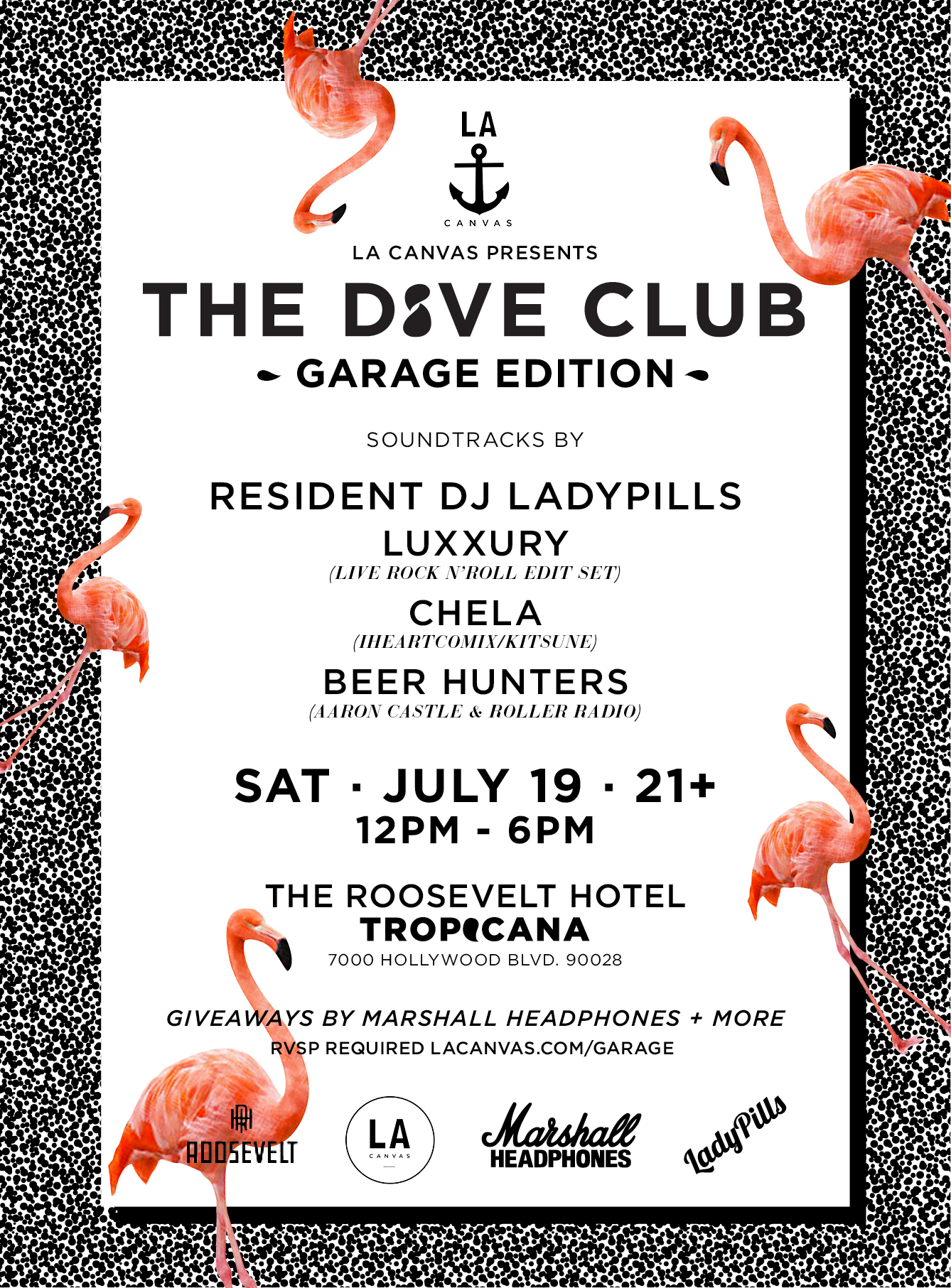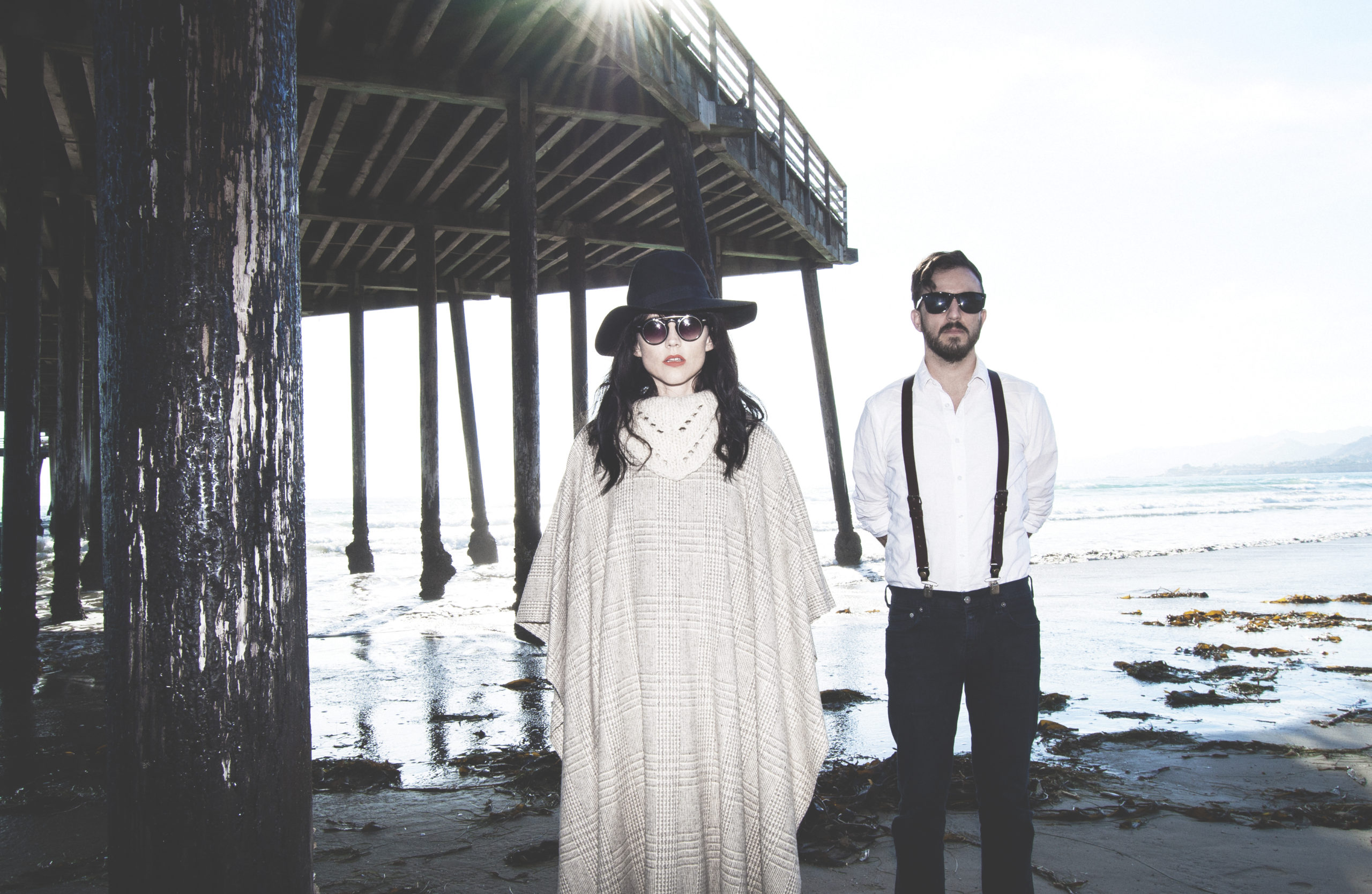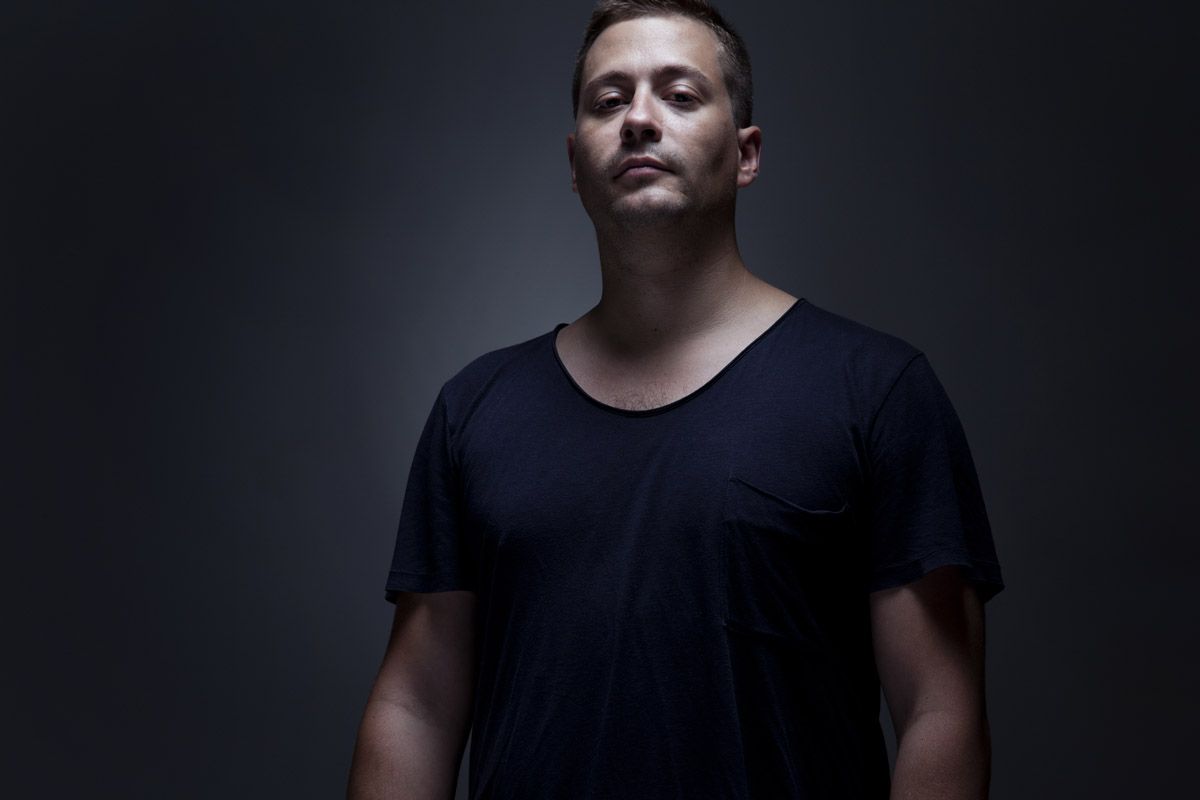[dropcap letter=”W”]ith the heat gradually rising day by day, we’ve been prone to putting our single unit A/C on full blast and rocking out to the tunes of our favorite bands. While I shrivel up to the sounds of Pentagram, Bass Drum OF Death and ASTR (I know, a very odd mix), I’ve come to find out that one of our favorite LA-based bands released a new album just last week. The Downtown Train, consisting of band members Troy, Bevi, Ned and Christopher take the meaning of cool cats to a whole new level. With the release of their EP appropriately titled “Egyptian Quinceañera” and a Monday night residency at new local hot spot Good Times At Davey Waynes (featured in our latest Teamwork issue), the guys seem to be the upward slope. I attended their album release party and had the chance to sit down and chat with the gents about life, music and a few of their personal favorite haunts in the city.
LA CANVAS: We heard you mention that your songwriting process took a few years leading up to this LP. What was the deciding factor for you as musicians when you knew you had what you wanted to move forward with and record?
TROY: Well, I come up with the songs, unconciously, months and months before hand through life, and the moment that they become the train songs, is when we are all jamming together. At that point, they hear them, and are able to put their magic into the pot, and thats when we come up with a real solution. We are always trying to find a new path, sometimes you come upon a real deep cut of forest in front of you, and it’s not always easy to keep going, so once we all get together, that’s when we start cutting through it all and it really becomes a hit, that’s where I think the magic is.
We are always trying to find a new path, sometimes you come upon a real deep cut of forest in front of you, and it’s not always easy to keep going, so once we all get together, that’s when we start cutting through it all and it really becomes a hit, that’s where I think the magic is.
LAC: You and the band recorded your demos in a cabin out in Joshua Tree. Was there any particular reason why you did so? Were you somewhat following in the footsteps of those icons from the 60’s and 70’s that did the same?
NED: As much as we do take influence and inspiration from the old school, rock and roll cats and the music and mystique of going out to the desert, it really is just a place that we resonate with that is isolated from the city . We needed to go away to focus on these things. Going back to what Troy said about the writing process, once a good portion of the record felt like it was together, that is when we decided to go out there. There were actually a few tracks that hadn’t been fully worked out yet and they kind of just came alive out there.
TROY: Yeah like 4 tracks, which is ⅓ of the whole album.
NED: Thats the kind of energy you find out in the desert. The inspiration and isolation that you have allows you to create without any worry, and thats what we did; by putting ourselves in this beautiful place. I think that is the same thing that those people saw, especially in the area of Joshua Tree.
LAC: While you were set up in Joshua Tree, the band particularly chose to record inside a rustic style house, and record all the demos strictly on analog. That must’ve been a pretty hefty set up, why did you choose to go that route in terms of recording style?
NED: We just went with tape, because we knew it was going to sound rad. We recorded once before digitally and we thought it sounded too clean, so we wanted to go more old school.
CHRISTOPHER: It’s complimentary to this sound, it gives off this warm feel, like a lot of old records, and thats something you don’t hear a lot anymore because of things like Pro Tools. It gives a uniqueness in this world, and connects back to that world of 60s and 70s rock and blues, which makes it sound nice.
BEVI: And at the beginning of the track it goes shhhhhhhhhhhh [the sound a record or tape makes when you start it up] saying [in a whisper] to be quiet, and listen what you’re about to hear.
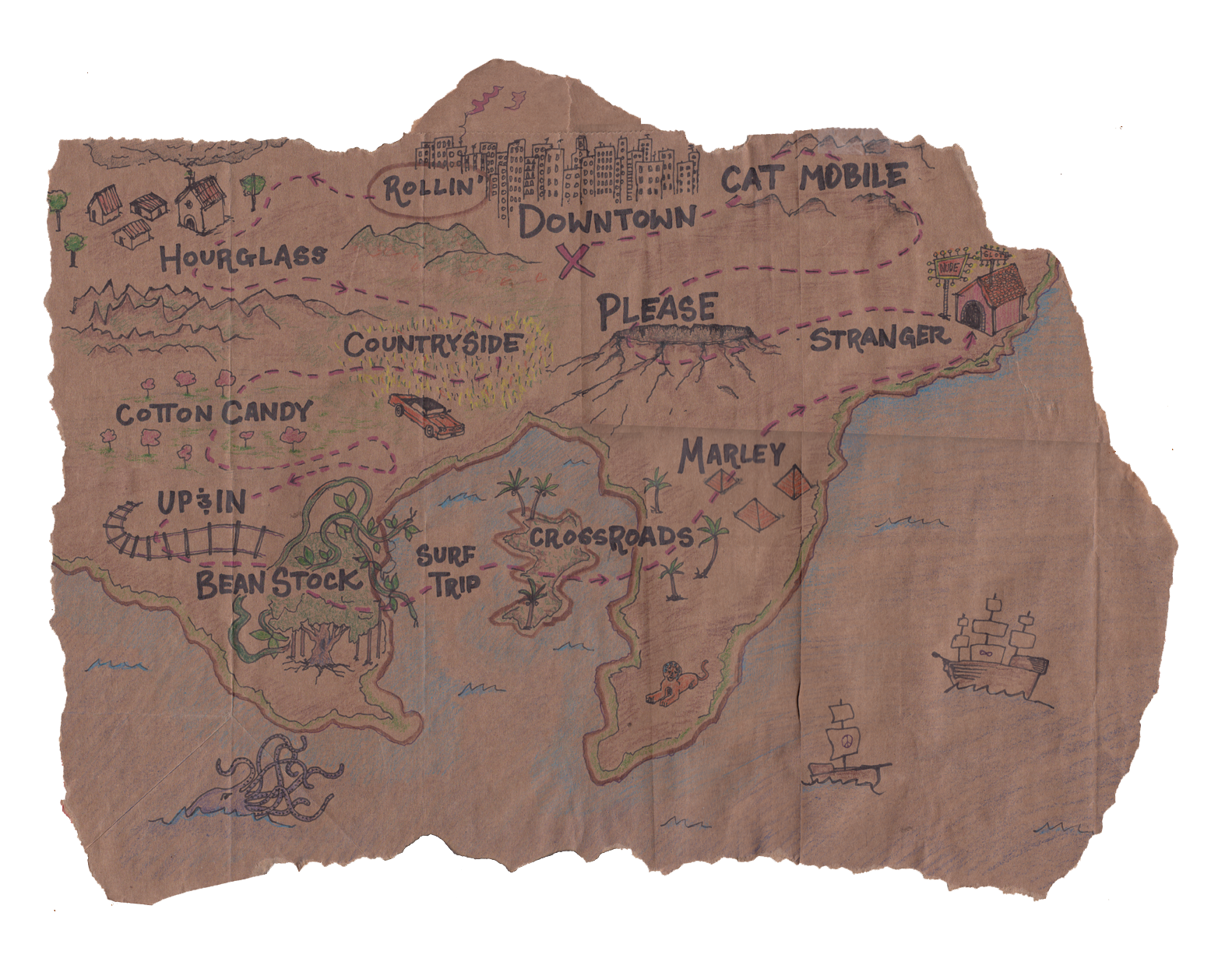 LAC: What was the process like setting all of that up?
LAC: What was the process like setting all of that up?
BEVI: Basically we recorded our first album at some place where we didn’t necessarily feel comfortable, where we could do everything we wanted to do so we tried to find a place where we could do exactly what we wanted to do and feel free, and that was the desert. There’s something about the desert, where there’s almost no rules out there, because it’s not dense. So Troy found this really awesome place called The Bottle Rock House in Joshua Tree, and then we met Tyler and JJ from Zenith Studios when we were playing at the second Desert Daze out at the Sunset Ranch. So the guys met us out there with their recording equipment at these two houses. One was made out of wine bottles for walls, and the other was more of a normal house. Our sound man Gary was out there too, and they literally set up a whole vintage recording studio in this Bottle Rock house. There was nothing there and then all of a sudden, a couple days later there’s this whole studio inside the bottle house [kind of like a control room] where we had a cord snake going into the other house, where we played live.
NED: Also the amps were spread out into three cars outside of the house.
BEVI: Yeah we had the bass amp, Troys guitar amp, and mine in three separate cars, that way it didn’t bother the neighbors and we had the isolation.
TROY: The actual location and how everything came together was really the most thought out part of the entire album, which I think was pretty interesting The music just came naturally, and like you mentioned earlier, it took a long time, and it just came. One of the songs in particular, “Marley” came to me in an Indian casino up near Yosemite, while I was at a buffet and I just started hearing this repetitive melody, that was really high tension, and I just had to run out to the car and get my guitar and figure it out. It wasn’t until Joshua Tree that I wrote out the map of the song listing and saw how they all flowed together.
Ideally if you put something out there and you do everything you can on your end, its bound to come around. I think if we work with our friends at different labels, it’s definitely a good way to catapult to the next level of where we want to be.
LAC: What are your hopes for the future of the record?
TROY: Hopefully we will be working with some of our friends—people that are inspiring music to be spread around the world which is really the key factor with any music. Music is not an idea until a lot of people hear it, and thats when it inspires people—especially here in Los Angeles. It has to go to ears beyond here, and thats when our friends at spots like Lolipop and Burger Records can help us out.
CHRISTOPHER: Ideally if you put something out there and you do everything you can on your end, its bound to come around. I think if we work with our friends at different labels, it’s definitely a good way to catapult to the next level of where we want to be. We aren’t looking to sign to a major label overnight, its about the journey.
LAC: Lastly, as always here with my interviews for LAC — as a band, what is your favorite spot to eat?
TROY: After a show, we go to Crispy Pork Gang and then for before and after a practice we go to Pacha Burger, to be COMPLETELY honest with you.
*Pick up “Egyptian Quinceañera” from the band at any of their live shows, and on digital platforms worldwide. Also catch the Downtown Train every Monday night at Good Times At Davey Waynes at 11:30 along with other local acts, and the bands own DJ Ned Casual on the decks spinning your favorite classic jams.

